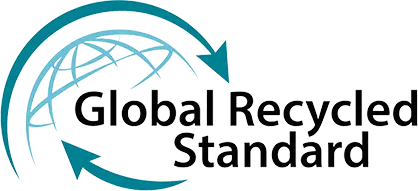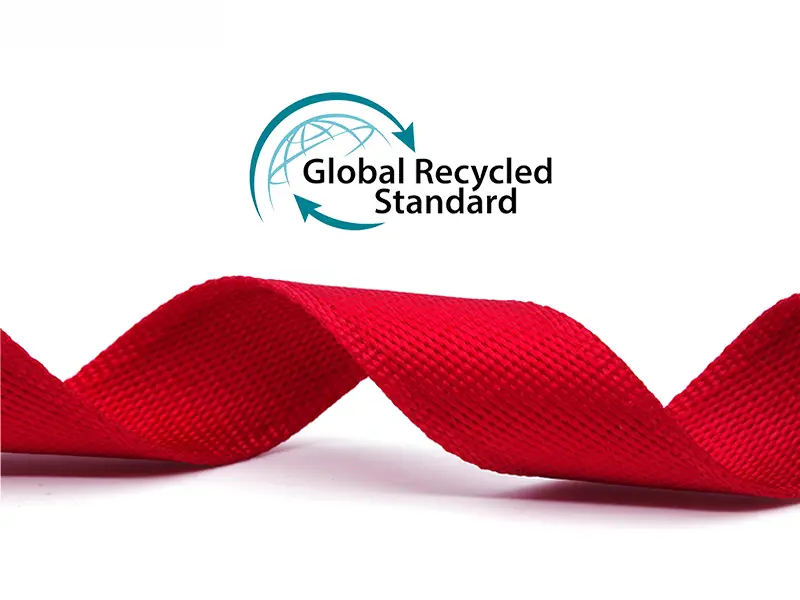In today's market, sustainability is no longer a niche interest; it's a core driver of consumer purchasing decisions. Brands that embrace eco-friendly materials are not just contributing to a healthier planet—they are building a stronger, more resilient market presence. Webbing, a critical component in countless products, offers a powerful opportunity to showcase this commitment. This guide explores the world of sustainable webbing, focusing on rPET, and other innovative, green alternatives.
What is rPET Webbing? The Journey from Bottle to Strap
rPET webbing is made from recycled polyethylene terephthalate, the plastic commonly used for beverage bottles. Instead of ending up in a landfill or the ocean, these bottles are given a second life. The process is a marvel of modern recycling:
- Collection & Sorting: Used PET bottles are collected, sorted by color, and separated from caps and labels.
- Cleaning & Shredding: The bottles are thoroughly cleaned and then shredded into small plastic flakes.
- Melting & Extrusion: These flakes are melted down and purified, then extruded through tiny holes to form fine filaments.
- Spinning into Yarn: The filaments are spun together to create rPET yarn, which is then ready to be woven into high-quality webbing.
By using rPET, we significantly reduce plastic waste and decrease our dependence on virgin petroleum, the raw material for standard polyester.
Performance Check: Is rPET Webbing as Good as Virgin Polyester?
This is a critical question for any product designer or engineer. The answer is a resounding yes. Thanks to advanced recycling and manufacturing processes, rPET webbing delivers performance that is virtually indistinguishable from its virgin counterpart.
- Tensile Strength: rPET webbing can be manufactured to meet the same demanding strength specifications as virgin polyester, making it ideal for load-bearing applications like cargo straps and safety harnesses.
- Colorfastness: It exhibits excellent colorfastness, resisting fading from UV exposure and bleeding during washing.
- Durability: Its resistance to abrasion, moisture, and mildew is comparable to standard polyester, ensuring a long product lifespan.
Choosing rPET webbing is not a compromise on quality; it's a conscious choice for sustainability without sacrificing performance.
Beyond rPET: Other Eco-Friendly Webbing Options
While rPET is a fantastic choice, other sustainable options cater to different product needs:
- Organic Cotton: For products where a natural feel and biodegradability are paramount (like apparel, fashion bags, and baby products), organic cotton webbing is a superb choice. Grown without synthetic pesticides or fertilizers, it's softer on the skin and the environment.
- Dope-Dyed (Solution-Dyed) Webbing: This is an environmental innovation in the manufacturing process itself. Instead of traditional dyeing, which uses vast amounts of water and energy, dope-dyeing introduces color pigment to the polymer melt before it's extruded into yarn. This method drastically cuts water consumption, reduces CO2 emissions, and produces webbing with exceptional colorfastness because the color is locked into the very core of the fiber.
How to Verify Green Claims: A Guide to the GRS Certificate

In an industry wary of "greenwashing," third-party certification is the only way to ensure authenticity. For recycled materials, the Global Recycled Standard (GRS) is the most credible and rigorous international standard. It's more than a logo; it's your guarantee of traceability and responsible production.
A GRS certificate is a formal document issued by an accredited body after a thorough audit. When your supplier provides one, here's what to look for:
- Authenticity: Check the supplier’s name and the certificate's validity period. A legitimate certificate ensures the supplier has passed the audit.
- Scope: The certificate must specify that it covers the products you are buying (e.g., "webbing made from recycled polyester").
- The Transaction Certificate (TC): This is crucial. For every GRS-compliant order you place, the supplier must be able to provide a TC. This document is unique to your batch and serves as the ultimate proof that the specific materials used in your product are genuinely GRS-certified, linking your purchase all the way back to the source.
Always ask for both the main GRS certificate and the Transaction Certificate for your order. This two-step verification is the best way to protect your brand and honor your promise of sustainability to your customers.
Case Study: Outdoor Brand Boosts Image with rPET
An up-and-coming outdoor gear brand wanted to differentiate itself in a crowded market. They decided to re-launch their flagship backpack, switching all the webbing components—from the shoulder straps to the compression straps—to GRS-certified rPET webbing from TMG. They built a marketing campaign around the theme "Adventure Responsibly," highlighting that each backpack repurposed 15 plastic bottles. The result? A 20% increase in online engagement, features in several sustainability blogs, and a significant sales lift, particularly among environmentally-conscious younger consumers. Their commitment to sustainability became a key part of their brand identity.
Choosing sustainable webbing is a win-win. It enhances your product, elevates your brand, and contributes to a circular economy. Ready to weave sustainability into your next product line? Contact us to explore our GRS-certified rPET and other eco-friendly webbing solutions.

